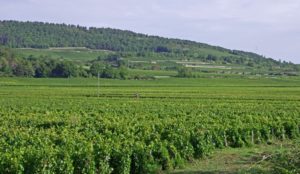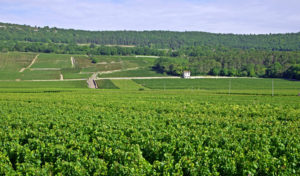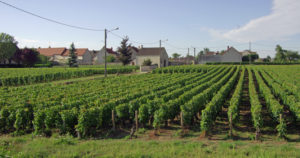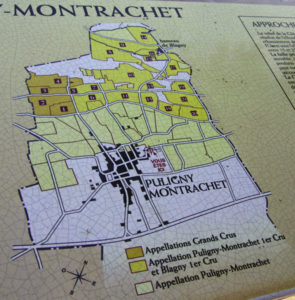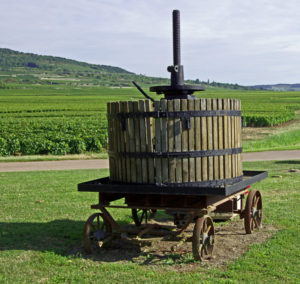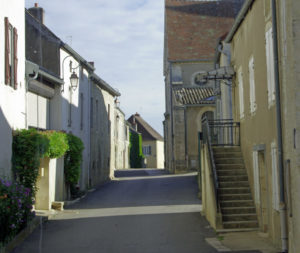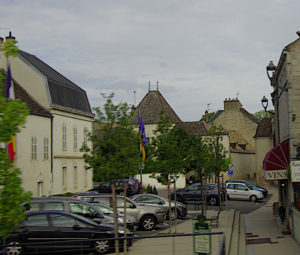We drove from Chalon-sur-Saône to Beaune past some of the most famous Burgundy wine villages including Puligny-Montrachet, Meursault, Volnay and Pommard. These are small villages with a cluster of houses surrounding the church, and make some of the best wine in France.
Vines have been grown here since the monks of Cluny began to make wine. The vines are grown on the slopes of a limestone escarpment known as Cote d’Or. In autumn, the leaves of the wines turn bright gold, giving the scarp its name.
The tops are covered with oak and beech woodland, which helps soak up rainfall and prevent run off. The oak is also used to make barrels. The vines have very deep roots and are able to access deep water supplies even during summer droughts. The vines grow best on poorer well drained soils and slightly different soil composition can affect which grapes are grown as well as taste. Vineyards are traditionally small, some are just a few acres, but produce very high quality wines. Yield is very much affected by late frosts or summer storms as well as the amount of sunshine. The vines are pruned to increase grape production with a few leaves left to protect the bunches of grapes from being scorched by the sun. The vines produce their maximum yield when they are 20-50 years. Younger grapes produce a more acid juice. After 50 years the vines are grubbed out and replaced. The grapes are still picked by hand.
It was a very pleasant drive through some delightful rural scenery. Unfortunately we didn’t have chance to stop and explore any of the small villages, although we did have a walk around the vines at Puligny-Montrachet.
This was Day 3 of Burgundy, the River Rhone and Provence, a river cruise with Riviera Travel.
My full account with all the pictures can be found “here.”:http://wasleys.org.uk/eleanor/otherholidays/rhone/index.html here.
